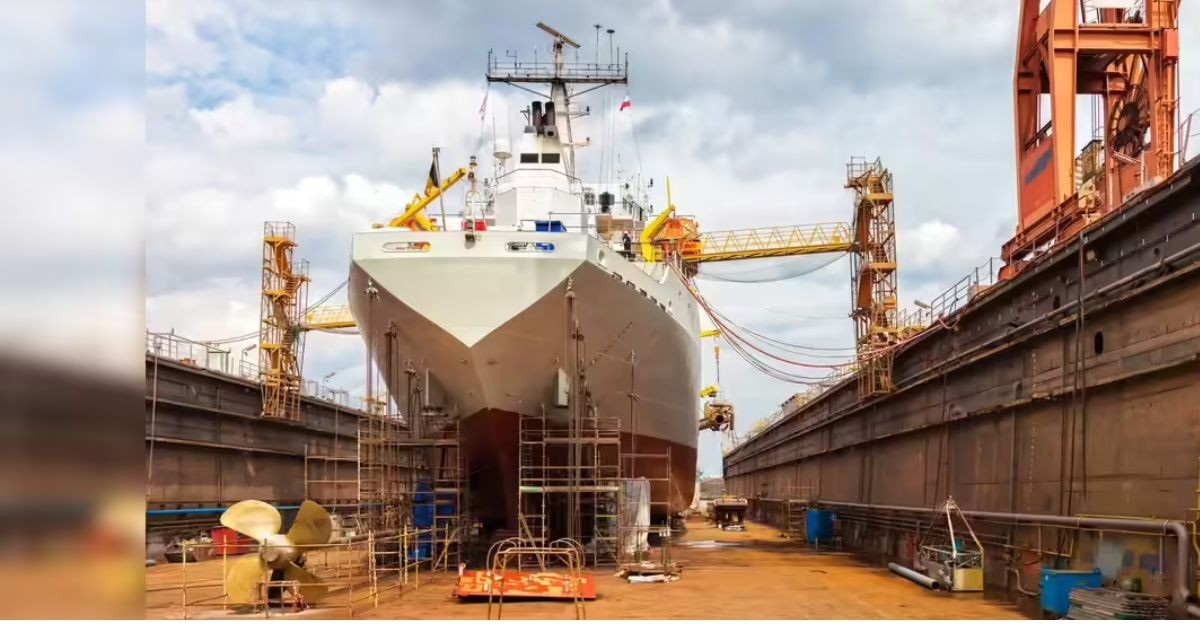After an initial setback, the Deendayal Port Authority (DPA) in Gujarat is charting a new course for its ambitious shipbuilding project. The authority, which manages the Deendayal Port (formerly Kandla Port), is reworking its plans to establish a world-class shipbuilding cluster on more than 2,000 acres of coastal land.
Initially conceived to produce Very Large Crude Carriers (VLCCs) of up to 3,20,000 deadweight tonnes (DWT), the project struggled to gain industry traction. A tender floated in December 2024 received only a single bid, forcing the DPA to shelve the plan. Now, the port is recalibrating its strategy toward medium-sized vessels such as Panamax (65,000–80,000 DWT) and Handymax (40,000–60,000 DWT) ships — segments that align more closely with current market demand.
The DPA plans to engage a consultant to finalize project parameters, identify suitable technology partners, and recommend a revised tender framework. Singh added that DPA would complement central government incentives with its own support — including land allocation, environmental clearances, and partial equity participation — to attract private partners.
From Stalled Ambition to Strategic Reorientation
The original concept aimed to transform the Kutch coast into a modern shipbuilding and repair hub, leveraging Deendayal Port’s deep-draught facilities and strategic location. The envisioned cluster was to include shipyards, dry docks, component manufacturers, and repair services, creating a maritime ecosystem to rival leading Asian shipbuilding centers.
However, global headwinds — including high capital requirements, policy uncertainty, and overcapacity in the East Asian market dominated by China and South Korea — muted investor enthusiasm. Industry experts noted that investors sought greater clarity on financial viability and long-term demand before committing to large-scale shipyard projects.
The DPA’s renewed efforts are expected to benefit from the Government of India’s ₹69,725 crore shipbuilding revitalization plan, announced in September 2025, which aims to transform India into a global hub for ship construction and repair.
The national strategy is built around four key pillars:
- Shipbuilding Financial Assistance Scheme (SBFAS): Extended until March 31, 2036, with a corpus of ₹24,736 crore, including ₹4,001 crore in shipbreaking credit and tax exemptions on shipbuilding inputs.
- Maritime Development Fund (MDF): A ₹25,000 crore fund comprising ₹20,000 crore for maritime investments and ₹5,000 crore to subsidize interest rates, ensuring accessible long-term financing.
- Shipbuilding Development Scheme (SbDS): Allocating ₹19,989 crore to expand India’s shipbuilding capacity to 4.5 million gross tonnage annually, while supporting new shipyards, R&D facilities, and training under the India Ship Technology Centre at the Indian Maritime University.
- Institutional and Policy Reforms: Focusing on skill development, green shipbuilding practices, and the establishment of a National Shipbuilding Mission to oversee policy execution and coordination.
With these new incentives and a more pragmatic focus on mid-sized vessels, the DPA hopes to reignite investor interest. The revised tender, incorporating flexible terms and a phased development model, is expected within the next three months.
Though the project remains in a preparatory phase, the shift toward a market-aligned shipbuilding model could turn Deendayal Port into a catalyst for India’s maritime manufacturing ambitions, strengthening the nation’s position in global shipbuilding and supporting the government’s vision of Atmanirbhar Bharat in the maritime sector.









